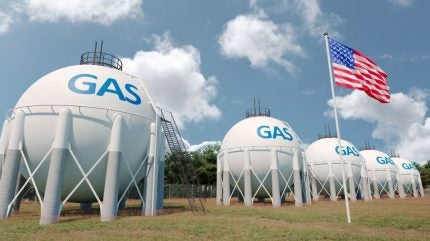
Just-released forecasts from the US’s Energy Information Administration has predicted that in H2 2024, the country will produce more electricity from renewables and coal, with increasing electricity demand and rising natural gas prices driving the change.
In its July Short-Term Energy Outlook, the EIA predicts that natural gas prices will increase by approximately 36% in H2 compared with H1.

Discover B2B Marketing That Performs
Combine business intelligence and editorial excellence to reach engaged professionals across 36 leading media platforms.
This is expected to reduce electricity generation from natural gas, the primary fuel source for US electricity.
“The increase in electricity demand paired with a decrease in natural gas generation creates a gap between the power we need and the power being produced,” said EIA administrator Joe DeCarolis.
The EIA also sees a 42% increase in solar electricity generation in H2 2024 compared with H2 2023. Additionally, the EIA predicts a 6% rise in electricity generation from wind, a 3% increase in hydropower generation and a 3% uptick in coal generation during the same period.
“Utilities will look for a more economical alternative as natural gas prices go up. Since so much renewable capacity has been coming online [in] the last couple of years, we expect renewables, especially solar, to fill most of the gap in the power mix. We expect utilities will also look to coal as a less expensive fuel source the rest of the year,” DeCarolis added.

US Tariffs are shifting - will you react or anticipate?
Don’t let policy changes catch you off guard. Stay proactive with real-time data and expert analysis.
By GlobalDataThe government body indicated that decreasing gasoline prices are influenced by increasing gasoline inventories, lower demand and oil prices below their recent highs.
Since hitting the highest point in 2024 on 22 April, the average price of gasoline in the US has gone down by $0.19 per gallon (gal). As of 1 July, it is $3.48/gal, which is $0.05 less than the price during the same period last year, according to the EIA.
The energy body expects Brent crude oil prices, the international oil market marker, to average $89 per barrel (bbl) in H2 2024 and $91 in the first quarter of 2025, up from the average of $84/bbl for H1 2024.
The price increase largely comes from EIA’s forecast of declining global crude oil supplies as global oil production decreases and global consumption of liquid fuels increases.
According to GlobalData upstream analyst Paul Hasselbrinck: “GlobalData’s forecast aligns with the [International Energy Agency] IEA’s expectation that demand growth between now and 2030 will be driven primarily by petrochemical demand in China and oil as an energy source in India. Developed economies, in contrast, are expected to show lower demand by the end of the decade.”
In May, the government energy body revised its earlier forecast of world oil demand for 2024, indicating that it is expected to grow at a slower pace. Additionally, the EIA predicts that global oil output will expand faster than previously estimated, leading to a more balanced market.
Hasselbrinck believes lower oil prices could significantly impact countries such as Brazil, Mexico and Argentina, which have higher production costs than OPEC+ members. These countries rely heavily on national oil companies for revenue, and they would need to make tough decisions about managing potential losses and prioritising their oilfields.
Similarly, he said that the US and Canada would also face difficult choices such as increasing imports from the Middle East and OPEC+ countries, which could pose a risk to energy security, or need to find ways to support their oil industries to remain competitive.





